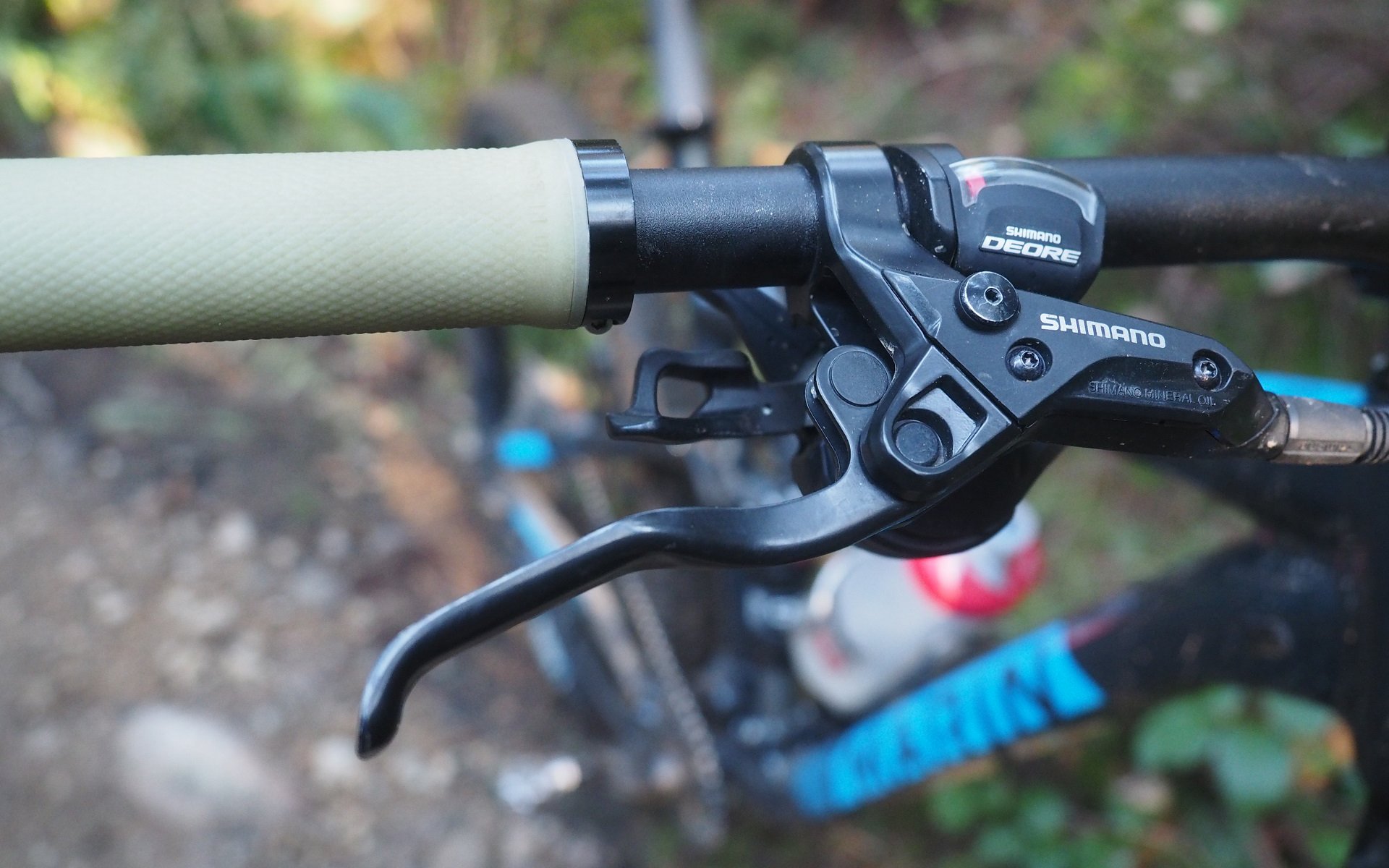
Editorial
Min-Maxing Budget Bikes With Marin
Min-Maxing
The min-maxing idea is pretty simple on paper. This is an alternate look at how to spec bikes to get the best performance per dollar, rather than to catch the eye of any fickle consumer. Spend more money on parts that make the biggest difference on the trail while staying on budget by cutting corners elsewhere. Wear items that will be replaced over the natural life of a bicycle are a great place to be stingy as well as by choosing off brand parts that often perform better than their big-name equivalents. This process is easier said than done and it gets increasingly difficult on less expensive bikes where a single upgrade, like a good suspension fork, can break the budget by hundreds of dollars.
Min-maxing has become an obsession for me since I started on my Marin Hawk Hill Review.
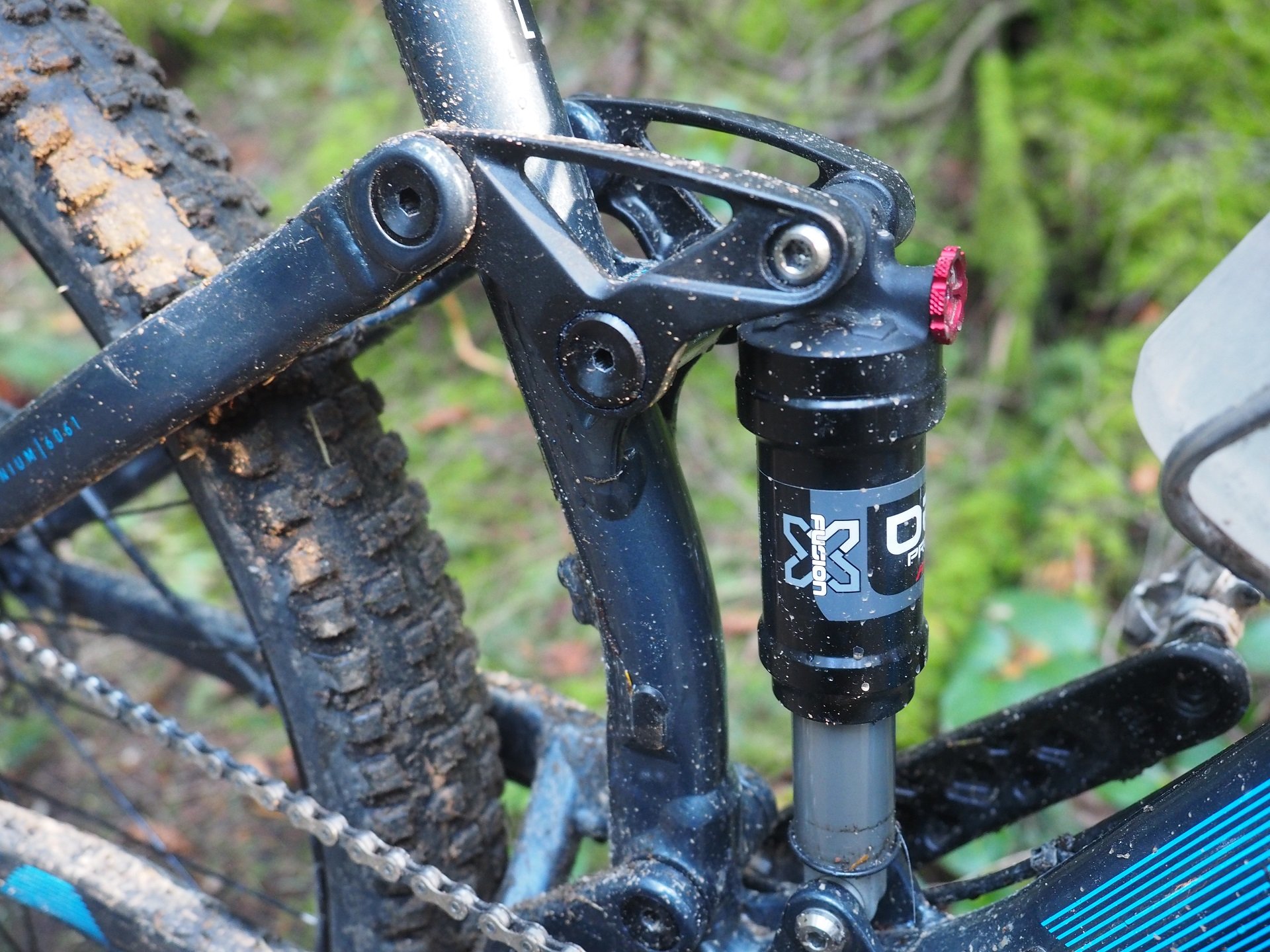
Having solid suspension geometry makes it possible to have a great experience with a basic shock like X-Fusion's O2 R, freeing up dollars to spend elsewhere on a bike.
My Hawk Hill Example
The Hawk Hill's suspension pedals well whether you're in the saddle or standing. It has good mid-stroke support from the leverage curve and ramps towards the end which, combined with the air shock's natural progression, makes for one of the nicest riding 120mm suspension platforms I've been on. It's playful yet poised.
All that with a very basic X-Fusion O2 R air shock that frees up money to be spent elsewhere on the $1500 (USD*) bike.
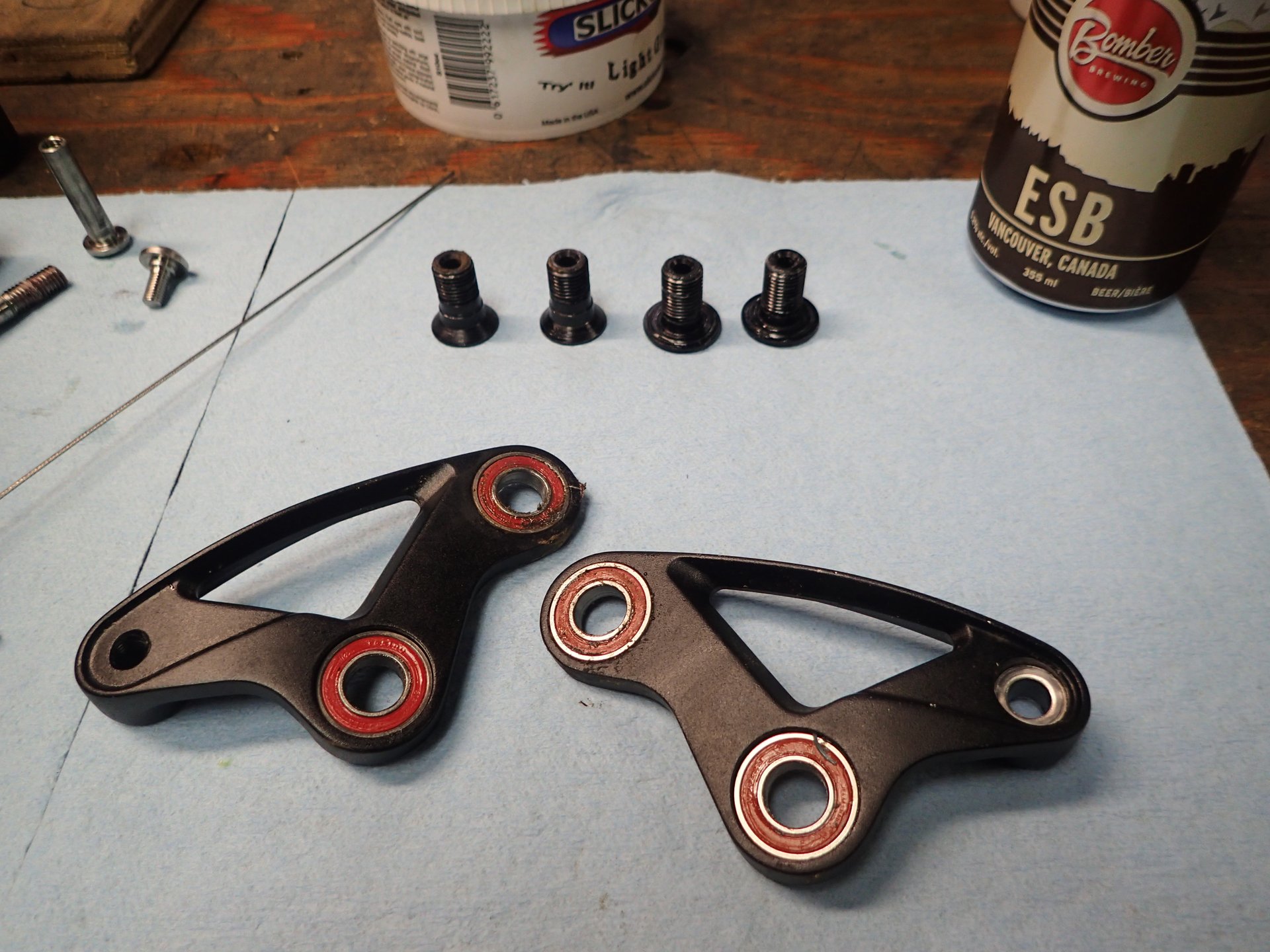
The Marin's suspension performance is great while the Marin's suspension platform itself is basic. For example, a one-piece linkage would be stiffer but add significant cost to the frameset. It's easily stiff enough as is: Min-Maxed.
In addition to dialing in the suspension and frame geometry, I think the Marin is quite a good looking bike. Appearance, frame geometry, suspension geometry - dialing in these things doesn't add significantly to the price of a bike.
The Marin frame doesn't use the highest end formed frame tubing and there are none of the beautifully machined sections present on high-end aluminum frames. The linkage is a basic two-piece affair although the way it mounts to the seat tube - held by clevis joints at the seat stay assembly - is definitely stiff enough.
Maximizing suspension performance and capability. Minimizing frame cost.
OE Spec with Marin
The Hawk Hill was put together to hit the magic $1500 (USD) price point and to get there, every choice counts. One example I noted in my review was the use of a heavy, steel-axled 135mm QR hub adapted to the 142 x 12mm rear end to cut costs on vs. the more familiar thru-axle and hub we're used to seeing on more expensive rides. Every dollar counts.
As I noted in my review, the bike is very fun and Marin is letting me hang on to it for a while to test other more budget-conscious components. And it is worthy of the upgrades.
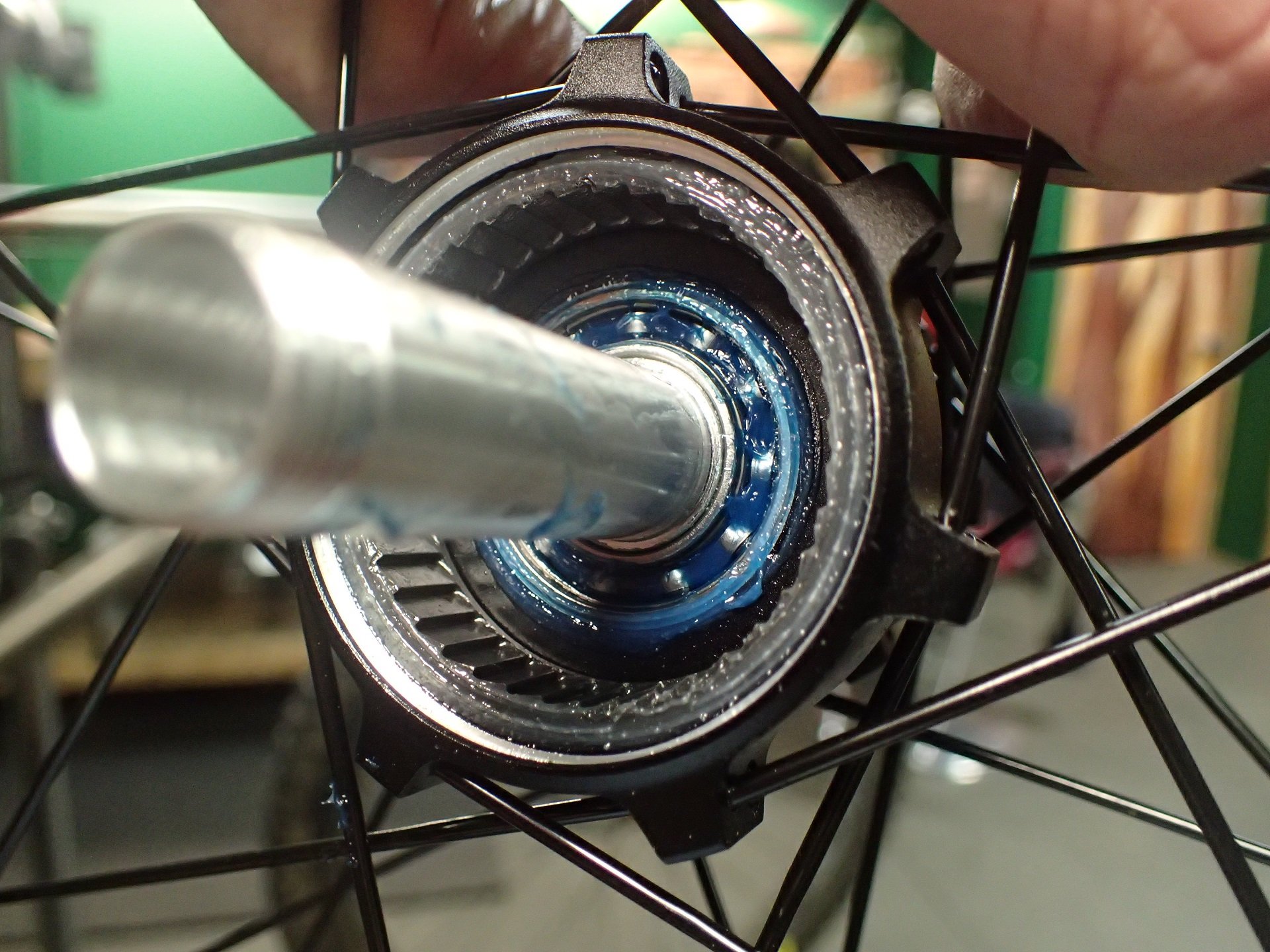
I'm using the Marin as a test bed for other budget conscious components like these very nicely assembled Race Face Aeffect wheels.
My experience tells me that Marin could sell a couple of higher end but still budget-conscious versions of the Hawk Hill. But what if instead of the standard procedure of 'a rising price lifts all components' Marin did something disruptive and pumped the difference in money into the key parts that make the biggest impact on the trail?
It's all just conjecture without numbers so I asked Marin's Chris Holmes and Matthew Cipes if they could run some pricing for me.
Marin Hawk Hill... 2
Normally jumping $500 up to the 2k price point would bring along a slew of small upgrades. RockShox Recon Gold instead of Silver, a higher end Shimano brake, an SLX rear derailleur... it's a pretty standard picture. As I'll discuss below there are reasons why my Hawk Hill 2 build probably wouldn't fly. But my goal, with Chris and Matthew's help, was getting maximum performance right off the shop floor.
What stays the same? The Deore shifting, SunRace cassette, Marin-branded 24mm crankset with steel narrow-wide ring all remain. These are perfectly serviceable parts or wear items. The stock bar and stem are heavy but the shape of the bar is good and it's 780mm wide. It's also likely that anyone looking for something more Gucci would want to choose their own favourites. I would also leave the surprisingly good Shimano Acera brakes, but upgrade the rotors.
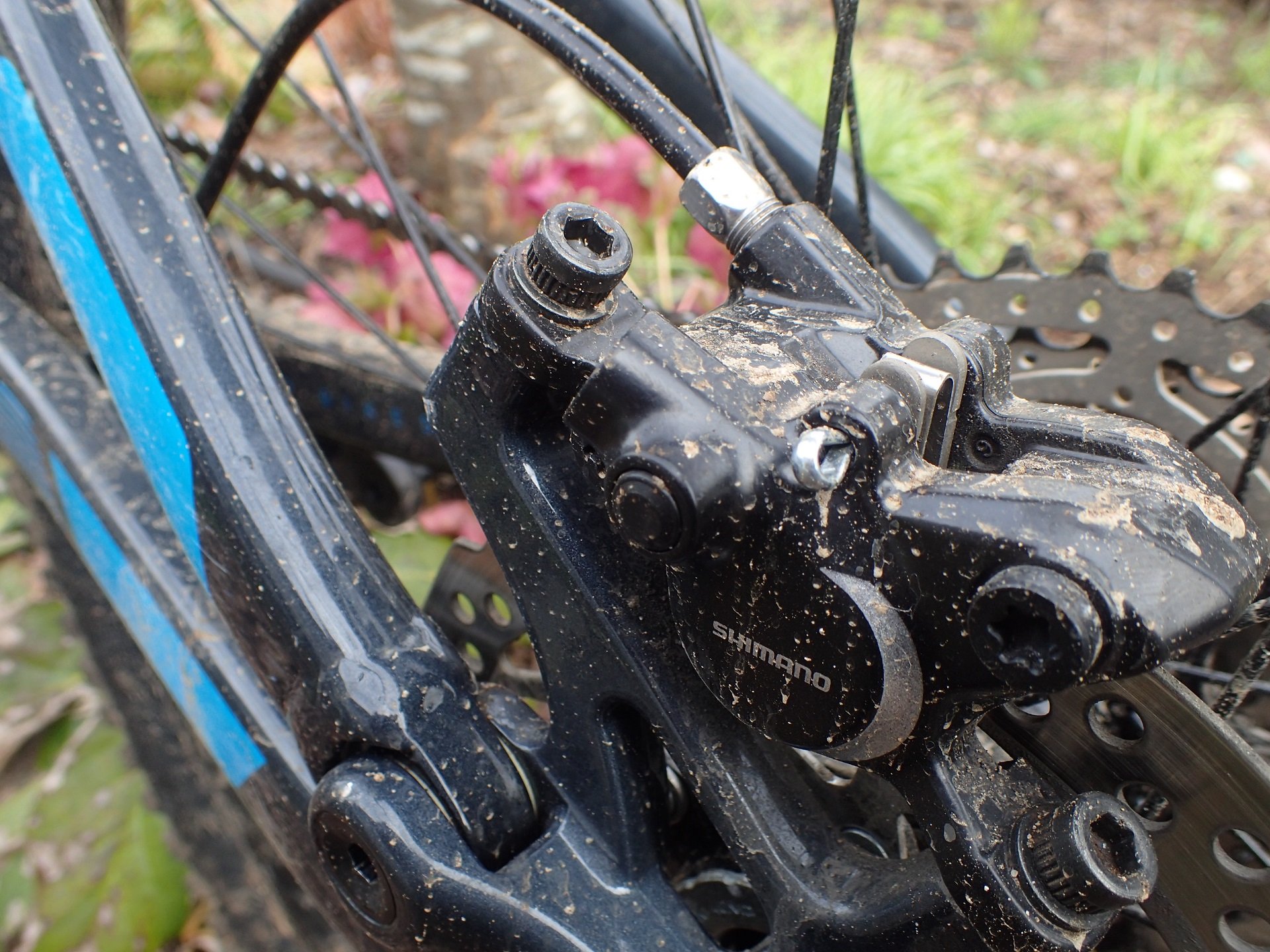
The basic Shimano Acera brakes found on the Hawk Hill are surprisingly good. They remain on the 2k Min-Max build, but with an upgraded set of rotors.
What do I get for $500 extra?
In terms of downhill performance, the most notable up-spec I requested was a fork. Specifically an X-Fusion Sweep RL. Thanks to a check valve in the damper the RL model has very good mid-stroke support while the simple air system and damper help keep the price in check. It's a 34mm stanchion fork that will increase stiffness and drop weight off of the Hawk Hill.
Another advantage of going with a 120mm X-Fusion fork is the no-parts-required super quick push-pin travel change. I'd love to try a 140mm fork on the front of the Hawk Hill but the quick internal change means there's no commitment, or cost, involved.
Because I'm addicted now, I'd also love to get a dropper post on the bike. Droppers offer a big boost in overall enjoyment as long as the chosen model is reliable and not some a piece of junk that's going to fail in the first month of hard riding. X-Fusion handles duties here too with the new Manic.
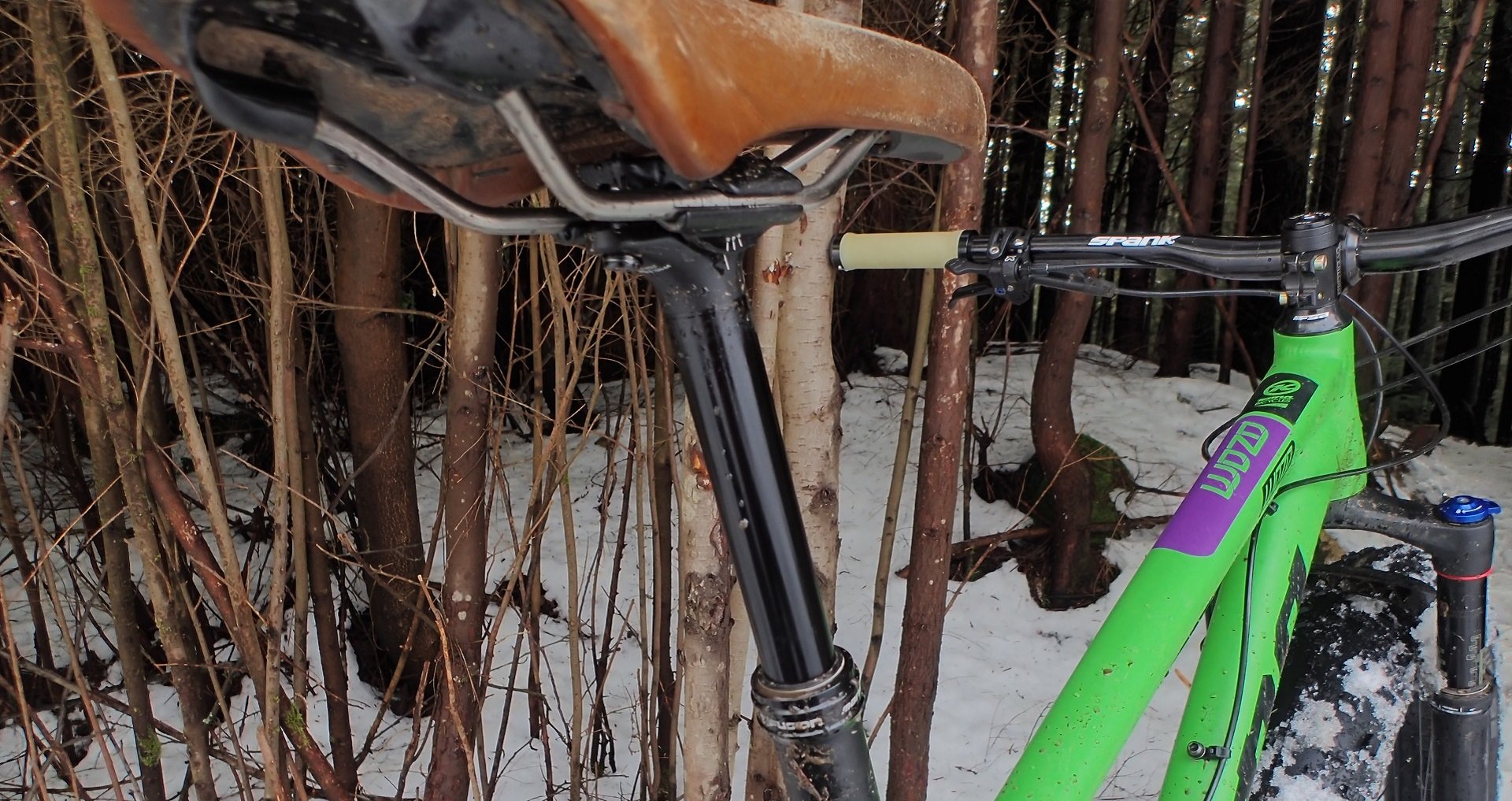
For an extra $500 (USD) at the OE level I can get an X-Fusion Sweep RL fork, X-Fusion Manic dropper post and a few other small - but notable - performance upgrades.
The rest of the spec changes are mainly house keeping but make for a big performance improvement. Shimano RT-66 rotors, Formula 6-bolt hubs with the proper 142 x 12mm axle laced to wider, Marin-branded, 29mm internal rims, and Schwalbe's Snake Skin Nobby Nic on the rear and Magic Mary up front.
I'll take bets that it's the best value and best performing $2000 mountain bike on the market.
Marin Hawk Hill 3
The theoretical Hawk Hill 2 offers heaps of performance per dollar. If we took it a step further, what could Marin deliver for another $500?
For starters, I left the Marin crankset, Formula hubs with Marin-branded rims, X-Fusion Manic dropper post, X-Fusion O2R shock (the Marin really doesn't need a pedaling platform), tires, cockpit and of course, the Hawk Hill frame the same for this $2,500 model.
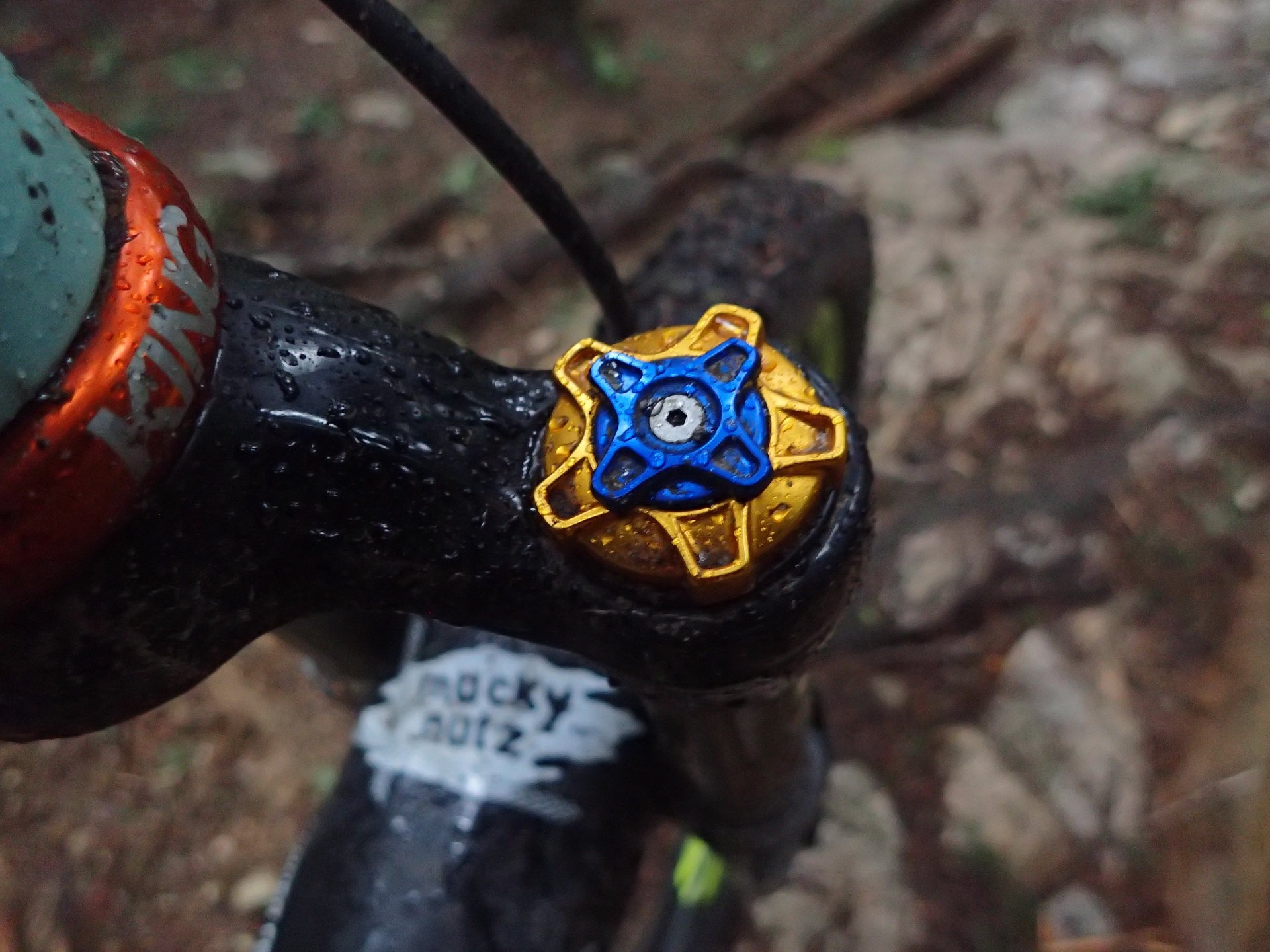
The X-Fusion Trace HLR 29er fork I tested delivers excellent performance, awesome build quality and a bled damper with high and low-speed compression. While min-maxing the Marin build I can get the 27.5" model of the same fork - the Sweep - in a $2,500 package.
After my excellent experiences with X-Fusion's top end Trace HLR, I'm confident it is one of the best value high performance forks on the market. Since the guys at Marin had offered to crunch the numbers I went 'what if' and asked about getting the 27.5" equivalent - the Sweep - installed on my top end Hawk Hill build.
That's delivering a better performing fork than some bikes are running at over twice the cost of the $2,500 imaginary Hawk Hill 3. Again there is also the advantage of being able to easily increase the travel to 140mm for anyone who wants to try it.
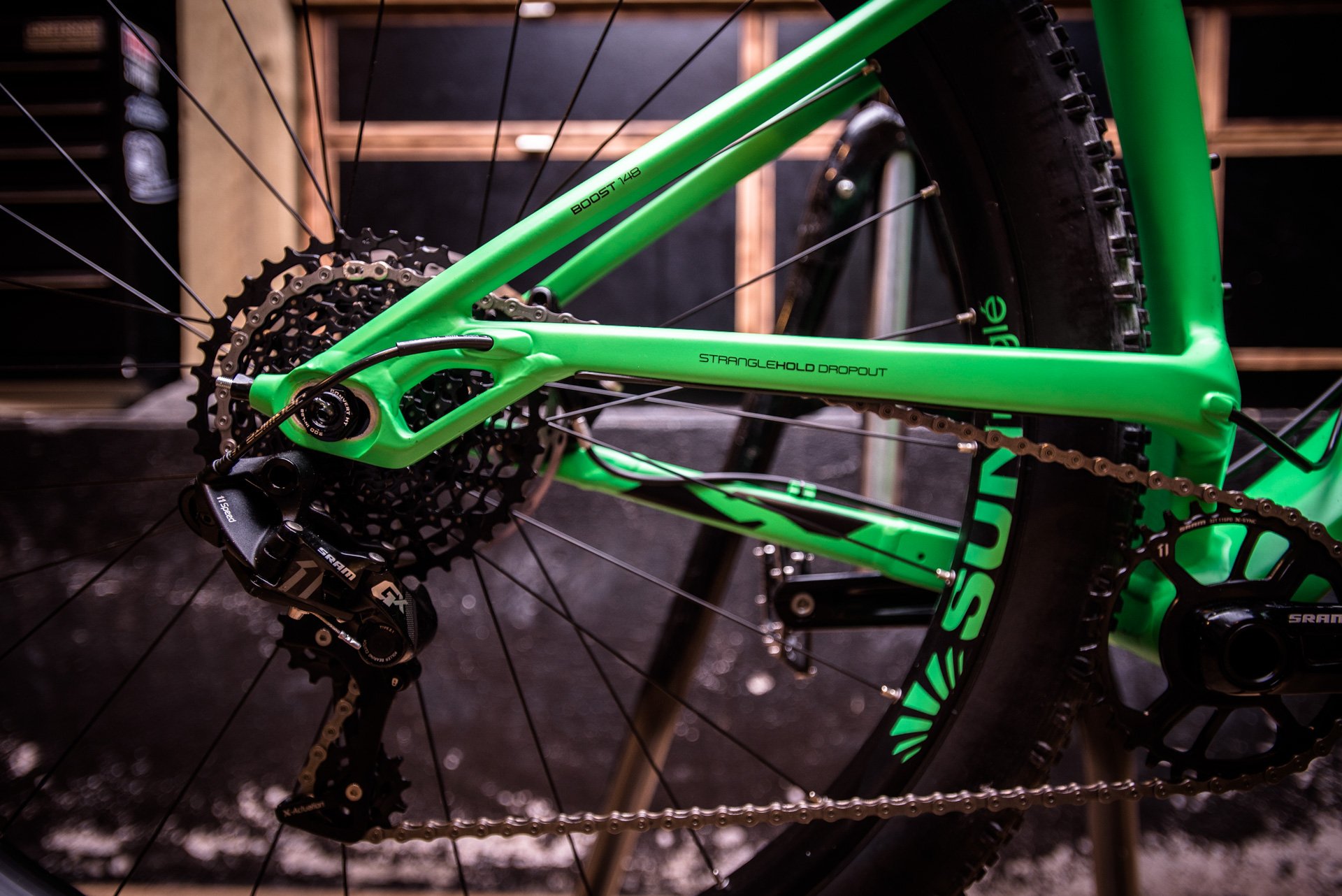
The SRAM GX drivetrain is my personal favourite for the mix of performance, feel and price. I combined the shifter and derailleur with a Sunrace 11-spd cassette for the $2,500 build but a steel SRAM NX cassette would also be an awesome option. Photo: Dave Smith
Since it's my fantasy bike it also gets a SRAM GX shifter and derailleur which is my favourite drivetrain for the balance of performance, feel and price. I stuck with an 11-spd Sunrace cassette but in hindsight, the all steel NX cassette would be a winner here as well.
Last but not least, Marin spec'd a few models for 2017 with a combination of a Magura MT5 four-piston front brake and MT4 two-piston rear brake. Essentially the system that Magura is selling for 2018 as the Trail Sport. I love my personal set of MT5 brakes and I was pleased with the MT Trail so Marin's MT5/MT4 mix or MT Trail Sport for a 2018 Hawk Hill 3 makes perfect sense to me.
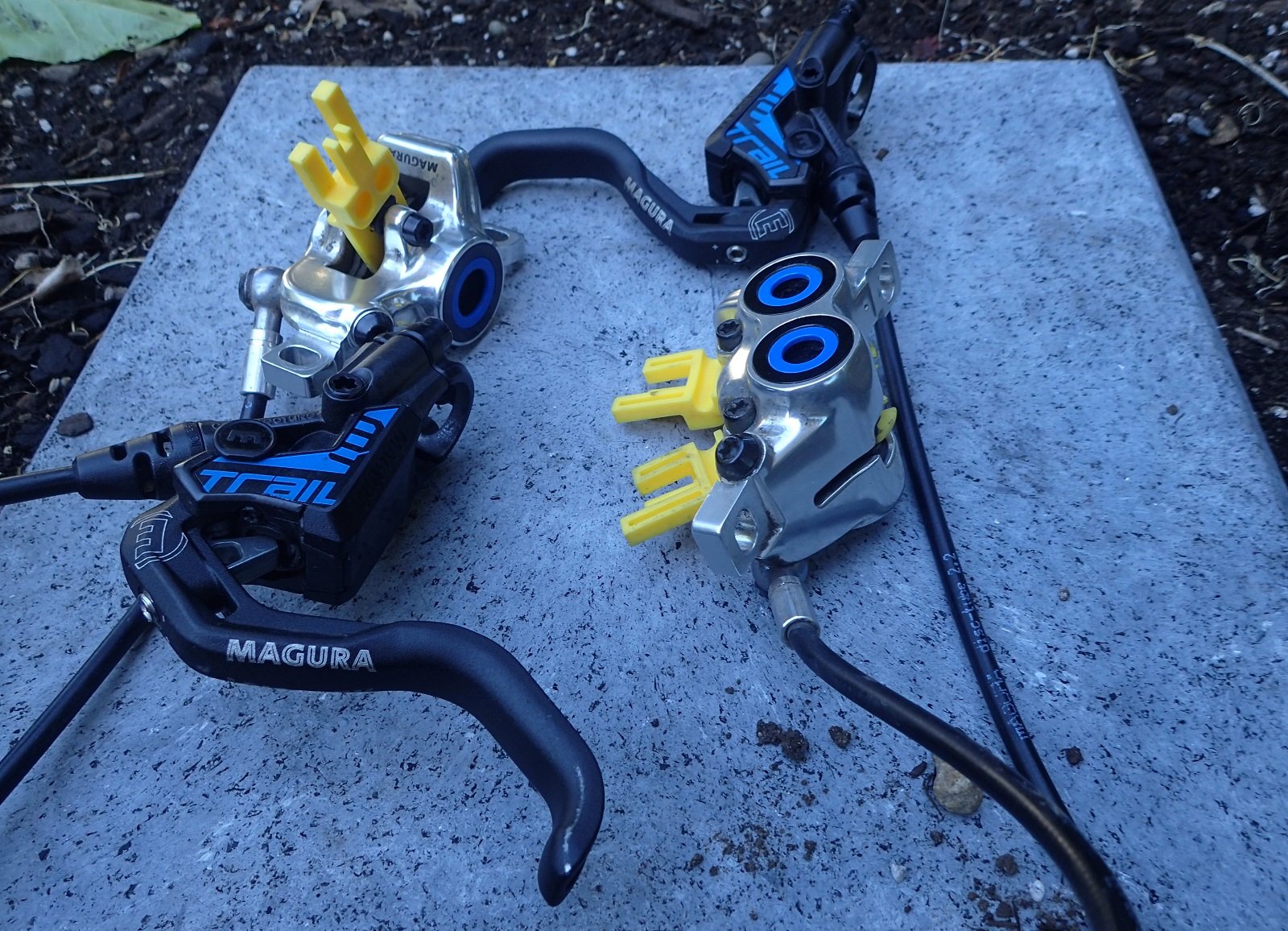
I've had great experiences with Magura's budget-respectful MT5 and no-holds-barred MT Trail brakes. Seeing as Marin already specs an MT5/MT4 mix - essentially the 2018 Trail Sport brake - on some models, it's a great upgrade for the third trim level of the Hawk Hill.
It's always possible to spend more money; drop some weight in the crankset, add a high-end bar and stem combo and I'd love to see a fast engaging rear hub if it was my personal bike. I'd still put the theoretical Marin Hawk Hill 3 up against any mountain bike at $2500 (USD) on all points: value, performance, and price.
It's a top end fork, awesome brakes and premium tires with quality components all around.
Bicycle Buying Psychology
The giant flaw in my plan is that I'm preaching to the well-informed choir. Unfortunately, many buyers in this price range will be seduced by an upgraded rear derailleur or a carbon handlebar rather than a fork damper they can't see or much better tires that look identical to the cheap versions on bikes selling for the same price.
Consumers are like moths to the flame of one shiny component upgrade instead of considering the full package in front of them.
Brand recognition also carries weight and it is probably less work for a shop to sell a Hawk Hill with the most basic Rock Shox Recon fork than to sell a similar bike with a significantly better X-Fusion RL product. Marin's already taking a chance with the very good, albeit house-branded crankset.
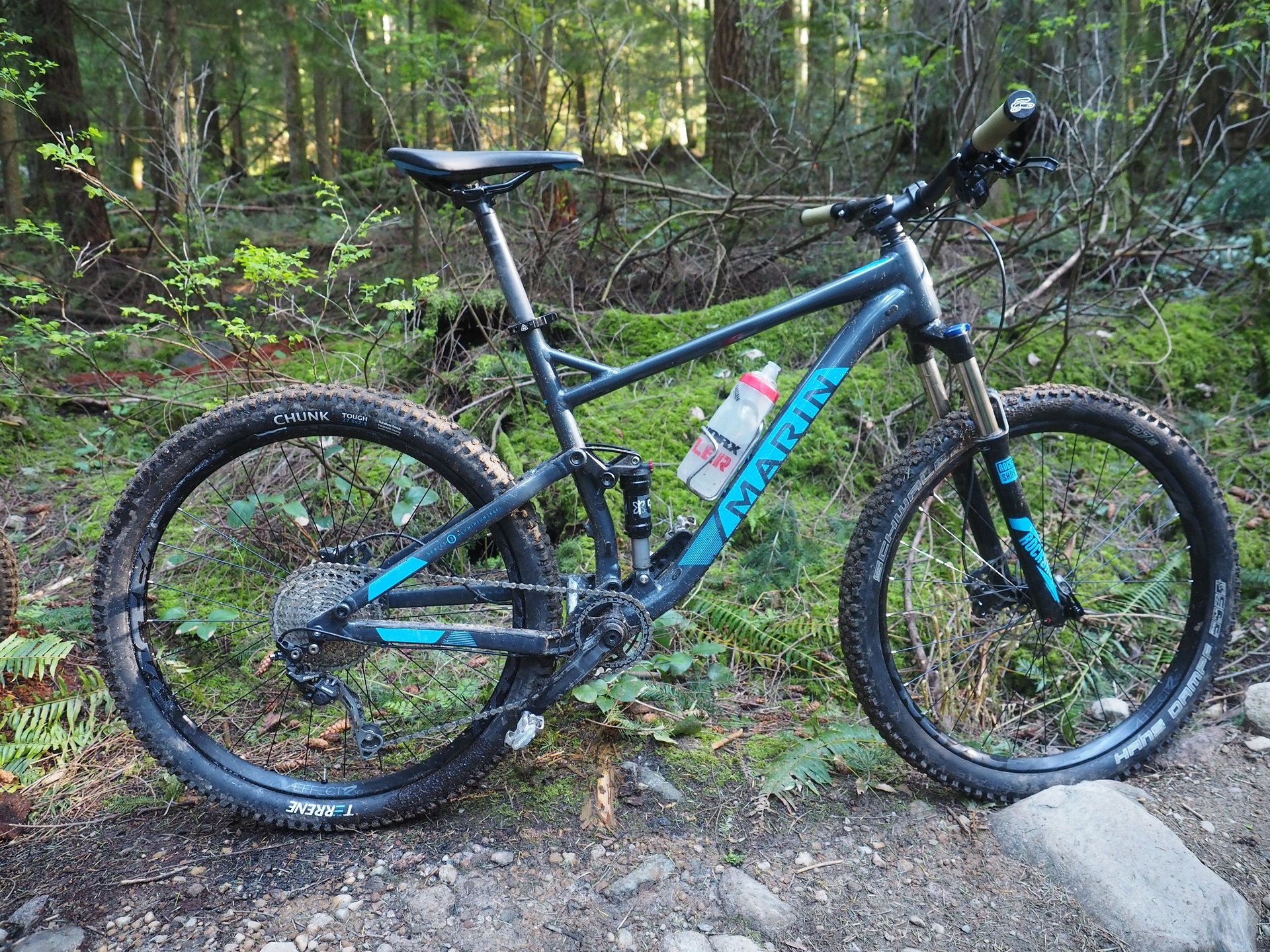
Brand recognition can't be denied.
Where does it go?
Selling bikes is a business. It's hard to imagine the big players tackling bike spec in a way that requires dealers to go further in educating customers on value. It's simply easier to sell bikes that come spec'd with brands consumers recognize and to upgrade the focus points like rear derailleurs. There also seems to be a resistance to designing inexpensive bikes with the same geometry as high-end models.
That leaves a sweet niche for companies like Marin who are willing to design their budget bikes with good frame geometry and dialed suspension. I'd love to see higher end versions of the Hawk Hill with the product manager's budget focused on maximizing performance at any price point regardless of the component mix that leads them to.
*For simplicity, all pricing is listed in USD for this article. The Hawk Hill Andrew is reviewing that sells for $1,500 US carries an MSRP of $1,899 in Canadian dollars.
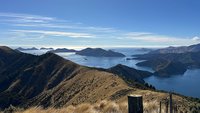

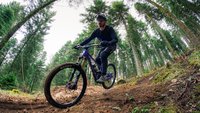

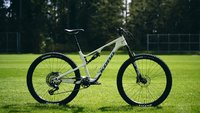
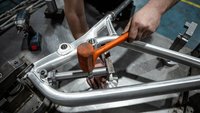
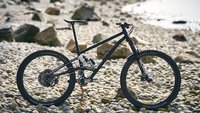
Comments
Agleck7
7 years, 10 months ago
Great article. I'm intrigued with the 4 piston front brake, 2 piston rear on a trail bike. I've recently been feeling a bit under-gunned on my SLX brakes w 180 rotors, and very much into the best value components.
What are folks thoughts on running a Zee front brake with another Shimano 2 piston in the rear? Would it be crazy to do a Zee front with a Deore rear as the ultimate Shimano 4 piston/2 piston value brake option?
Reply
Andrew Major
7 years, 10 months ago
My wife's bikes both run Shimano 4-Piston front and 2-Piston rear setups (old Saint front / XT rear & Saint front / XT rear) and my brother is running Zee / XT.
It works great. More - deeper - power and better modulation range with excellent front-rear brake balance.
I match rotor sizes front and rear.
For the price of a Zee caliper I thinks it's an experiment where you can't go wrong.
Reply
Agleck7
7 years, 10 months ago
Cool! Thanks for the insight.
So does she use the same levers but with different calipers? Seems like the ergonomics of the Zee lever and Deore lever are the same, and I'd prefer being able to run it right out of the box.
I think I have my next brake plan :)
Reply
Andrew Major
7 years, 10 months ago
Ha! Yes, the levers match. In one case I bought the components separately and in the other leaking XTR calipers lead me to replace them with Saint/XT (were my brakes that found there way onto her bike).
My brother has Zee levers with Zee/XT. I like the simple (tool required) look of Zee and at the time XT/SLX didn't have dimpled blades.
Reply
luisgutierod
6 years, 11 months ago
well, I have mt5 calipers with zee levers.. they do work!
Reply
Peter Adamkovics
7 years, 10 months ago
your proposed Zee front with Deore rear would likely work well...
i just recently installed a saint (m820) front caliper in an otherwise stock xtr race (M9000) brake setup, and it works great. the xtr race levers seem to work fine with the saint caliper. using a 200mm front 180mm rear rotors (magura storm sl) the bike stops really well. (finned metal pads front, non-finned resin pads rear)
Reply
Tehllama42
7 years, 10 months ago
The simplest and most cost friendly approach would be to simply increase rotor size up front - stepping up to 203mm out front is the biggest incremental bump in stopping power. Slight weight penalty, but that's a ~$60usd answer.
That said, despite being a large oaf, I'm not that hard on brakes because I'm almost always traction limited, so XT brakes on 203/180 rotors and finnned semi metallic pads works fine.
Reply
Andrew Major
7 years, 10 months ago
Have you ridden Zee/Saint or say an MT5?
I think the power curve is as important as power itself. Just to your traction comment the Shimano 2-piston Servo Wave brakes engage pretty instantly.
Reply
Tehllama42
7 years, 10 months ago
I've gotten to ride all of those, but only on demo bikes (which for the most part were larger bikes). If given the option I'd only ever ride Saints (or Saint calipers and XTR levers on both ends), because I adapted to those brakes almost instantly. They're unequivocally better, I just can't bring myself to spend more than I spent on M785 XT's
The servo wave nature on the XT/SLX/Deore brakes to most feels really on-off, but to me I feel like it's just a steeply ramped spline area where I'm trying to do all my modulation work with the finger within 3-5mm of lever travel. While not ideal, I've just gotten used to it - every brake I had ridden before moving to XT/SLX was garbage (Formula R1 & T1, Tektro cable-disks, and Avid Elixir 1's)...
but a grain of salt is still required because my other bike that sees the most miles is still running Elixir 1's on small rotors. Despite the practically worthless tires I run on that bike (utterly worn out Maxxis Aspen's - semi-slicks, but anymore the 'semi' is in name only), I'm pushing the thermal envelope on those brakes anyway.
So- I tend to be pretty indifferent about brakes provided I can get enough power to overwhelm the tires
Reply
Metacomet
7 years, 10 months ago
Absolutely love this article. I wish all completes were spec'ed with this type of approach. Real Value in performance/$, not just perceived value in flashy bits and acronyms. I think if this approach were the case more commonly, people would be a lot more encouraged to add another bike to their stable for a different type of riding, and they would be able to do it competently. Does Marin offer this as a frameset?
Reply
Andrew Major
7 years, 10 months ago
Hi Metacomet, I agree that min-maxing can be applied at any price point.
Marin doesn't sell the Hawk Hill as frame only at this time but I did let them know I've had a few inquiries.
Reply
Benjamin Felt
7 years, 10 months ago
I'd like to also add my support for this article! I'm really torn between trying to setup a Hawk Hill 2 or a Stache 7. I'm a new rider, and these seem like great options. Both of the recent reviews make the bikes seem super fun. With the similar price range, do you have advice on which type of rider/terrain would better fit one or the other?
Reply
Pete Roggeman
7 years, 10 months ago
Hi Benjamin, I'm sure Andrew will have some thoughts on this as well, but a few questions will help shed some light on an answer. Where do you live/ride? How aggressive are you? What bike do you have now?
Reply
Benjamin Felt
7 years, 10 months ago
I'm in Southern California. So I don't really deal with wet trails, if that matters. I currently just ride whatever I can find at traveling bike demos, or what buddies can loan me. These range from XC hardtails to long travel FS bikes. I tend to like the added stability of 29ers, which has we wondering if the 29+ stache would really make me happy.
Reply
Andrew Major
7 years, 10 months ago
Hi Ben,
Both bikes are definitely fun but the Marin - or a similar dually - is the obvious choice of the two here!
Why so certain?
I think 29+ / Stache is one of those bikes that's ideal for where/how you ride and who you ride with or it isn't... I know they sell really well and are well loved but I think if it was the right bike for you then you'd know it?!
I would definitely look at some hardtails as well but more towards a slack 29'er or 27+ model. Kona Honzo, Santa Cruz Chameleon or Rocky Growler are all interesting series.
Hope that's helpful.
Reply
Benjamin Felt
7 years, 10 months ago
The Chameleon is super tempting. I also came across the Salsa Timberjack. Any thoughts on that bike? The 27.5+ GX build seems pretty good, maybe just needs a new fork like the X-fusion Mcqueen.
Reply
Andrew Major
7 years, 10 months ago
Hi Ben,
We don't see much Salsa up here and even then it's mainly their awesome gravel and 'cross bikes.
I can comment on the Chameleon. It's a great bike. 27+, 29, or in my case I'd run 27+ rear and 29+ front with a 120mm fork.
I didn't have it long term but it's got a great ride - and a really great ride for an aluminum hardtail. I also love the dropout system for single speeding!
If I could make one change it would be press-in headset cups but that isn't a deal breaker.
Reply
jeffgicklhorn
7 years, 10 months ago
Great article Andrew! I've taken this approach to my own 2014 Kona Process 134DL, trying to find the max benefit for min input over time. Most of the reviews that I've read of the Hawk Hill have said that it "punches above it's weight class/price category" (massive air quotes), but you have actually taken the time to get those changes priced out. Awesome that Marin helped out with pricing components. I would love to see this approach given to more lower / middle tier bikes to allow newer riders on budgets (or really any budget conscious rider) to know where they can get the most bang for their limited buck with future upgrades.
Reply
Andrew Major
7 years, 10 months ago
Thanks for the props Jeff!
The guys at Marin have been beyond helpful - they get it.
I have the Hawk Hill for a long term test platform and lots of bang-for-buck component reviews coming up featuring this platform.
Reply
Erik Olavsen
7 years, 10 months ago
Awesome article! I am the proud owner of a HH and have upgraded both the post to a reverb and fork to a suntour aion I'm running at 140mm. Both were used but the fork was from a buddy and in really great shape. Really love it so far.
My next upgrade is going to be wheels. Any insight into a good budget friendly way to go? I would like to go with a wtb convict/breakout 2.5" combo for rubber.
Reply
Andrew Major
7 years, 10 months ago
Thanks Eric,
The first thing you need is a Shimano SM-AX58 thru axle. There are other Shimano axles, and even some OE axles, that fit but this is recommended as the final lever position is adjustable. That's what I'm running and it works great.
For wheels there are a lot of options and it can be hard to claim a best value because of world wide price fluctuations, clearouts etc.
With my caveats out of the way, I'm currently testing a RaceFace Aeffect wheelset with 30mm internal rims and I'd definitely recommend checking them out.
They use a proven reliable Formula freehub with a reasonable 10-degree of engagement and the RaceFace/Easton rims are proven reliable.
Value wise the wheels include extra spokes and come taped for tubeless with valves installed.
Not light but not heavy. Not cheap but not boutique.
Cheers,
Reply
Dpaulsco
7 years ago
Can you just swap out the axle with the existing hub or do you need to covert the hub?
Reply
Andrew Major
7 years ago
You need to replace the rear hub to convert the frame to a thru-axle - the stock hub is not convertible itself.
Reply
Dpaulsco
7 years ago
Bummer. Thanks for the answer and the great article.
Reply
Seiken
7 years, 5 months ago
Hi Andrew and thanks for the awesome articles!
I am very interesting to buy the hawk hill and now that 2018 models have been released, I would like to know your opinion about the 2018 hawk hill 2 model. Does it worth the extra 500$ or it would be better to buy the model 1 and make your upgrades?
It looks like they took in consideration your advises and made the most important upgrades that you mentioned above. Except for the fork (both recon, but looks like there is something different), instead they changed they rear shock. If I consider your article, the x fusion rear shock was doing the job and it would have been better to upgrade the fork. A X-fusion fork or the revelation from the model 3 would have been better in my opinion.
Also I would like to try a 140 fork but I am a little bit scare about messing up with the bike geometry and unbalance the bike. Did you get the chance to try it out? I don't know why, but I still thinking that I need 140 travel, 120 look short... but maybe I am wrong. Maybe it is because my "dream" bike is the transition scout and I am trying to reach it. But somehow, those two bikes have the same purpose... fun factor! In fact, this is the part that I am sure of it. I am definitely looking for a fun trail / all mountain bike to ride like a best friend that you will bring everywhere... going up, going down and jump everywhere! Those 2 bikes seems to nail this fun factor... at the different price.
Thanks in advance!
Alex
Reply
Andrew Major
7 years, 5 months ago
Hi Alex,
Thanks for the props!
The answer to your question re. price point is Absolutely Yes. If you can spend for the 2018 Hawk Hill 2 there is a lot of additional value.
First off, the frame is slightly different. It has a Boost spacing (148mm) rear end where the Hawk Hill 1 is a 142mm rear end (reduced to 135mm so it does require an axle for future wheel upgrades). That means the HH2 is forward compatible with the current wheel standard that most companies have adopted and ~ all companies will adopt.
There are also a number of component upgrades. My favourite is the Formula rear hub which is actually a really reliable choice with decent engagement points. They're also laced to 29mm internal rims vs. 27mm on the HH which is a very minor detail but again is inline with current standards.
I've been killing an NX drivetrain on my commuter bike and I'm really impressed with the reliability. One nice thing over the HH drivetrain is for future upgrades the NX derailleur can handle a 46t cassette if you want a bit more gear range.
The HH2 also comes stock with a dropper post. I have no experience with this particular model but if it's reliable that's a big upgrade.
.
To your point about the fork - with OE spec you can't always be certain what is under the hood BUT the Recon RL should be easily extended to 130mm, 140mm or even 150mm by swapping a relatively inexpensive air shaft. Definitely something I would have you dealer look into.
I didn't have a chance to over fork the HH I was riding but I'm sure I would have loved it with +10mm or +20mm if that was an option. Forced to choose without trying I'd flip a coin between 130mm and 140mm.
.
Buying an HH2 I'd budget for a great front tire right off the bat. Something like a Maxxis Minion 27x2.5 3C or 27x2.35 Schwalbe Magic Mary helps a more basic fork find traction and really boosts the confidence factor.
If the rotors have 'Resin Only' stamped on them then I wouldn't leave the shop without getting them changed out.
.
Without knowing how tall you are or where/what you ride... have you considered the Marin Rift Zone 2? The same spec and geo as the HH2 - so all the same feedback as above - but with the added rollover and small bump benefits of 29" wheels.
Of everything on the market this year the Rift Zone / B17 (same frame but with 27+ wheels) is the frame that calls to my desire for Champagne performance on a crap-beer budget.
Reply
Seiken
7 years, 5 months ago
Wow thanks for the quick and complete Answer!
You gave me some good reason to go directly to the HH2. Hopefully I can extended the fork, this will be more cheaper than buying a new 140 fork (My dealer is offering me to change the fork for another one and reduce the recon cost from the new one, so I won't eliminate this option too soon). So, you don't think it will mess up with the geo and balance?
I am 5-10 tall, I saw the Marin rift, but I am not really fan of the 29" wheels. I am aware of the small bump benefit, but I still consider more important the playful an "cut corner" that 26 and 27.5 give.
Thanks again!
Alex
Reply
Andrew Major
7 years, 5 months ago
Hi Alex,
No problem.
Once you're in a neutral position on the bike the sagged fork is only 15mm taller between a 120mm and a 140mm. It's such a small change you can lower your stem a touch and move the saddle forward a bit in the rails and you'll be golden.
The thing with swapping the air side rod - assuming it's possible with the Recon RL - is that you can always go back to 120mm if you want to try it both ways.
Makes sense re. wheels.
Cheers,
Reply
Seiken
7 years, 5 months ago
Great!
You're totally right, swapping the air side rod is a better option and will give me some liberty, if someday, I change my mind!
I will keep you in touch with the result!
Thanks for your help!
Cheers!
Alex
Reply
rocky.mtn
6 years, 10 months ago
Really appreciate this article!
My girlfriend and I have both just purchased a Hawk Hill. Her first trail bike, and mine for getting back into trail riding after a several year hiatus (previously rode a Specialized Enduro). We're going to be riding mostly around Calgary, and then down in Fernie and Montana. I'm already skeptical of the 120mm of travel upfront (considering I'm pushing 200lbs), but I think that will be an upgrade down the line after some good use.
The X-Fusion post will most likely be the first upgrade on our bikes to inspire greater confidence on the descent.
Would you change the recommended set-up settings for a female (120lbs, 5'7)? Maybe slightly more sag?
Cheers, Tom
Reply
Andrew Major
6 years, 10 months ago
Hi Tom,
Enjoy your new bikes!
We’re not far off weight wise so I’d suggest you’d be happy with ~25% sag rear, ~23% sag front and rebound fairly open on both. The only firm rule is to keep your fork firmer and faster than the shock.
For your girlfriend’s bike the same numbers should work but if it helps to initialize the suspension you could try 28%-30% sag out back. I’d drop the lowers ASAP on he bike and lube the fork seals (https://nsmb.com/articles/wrench-now-ride-later/) as any friction will be even more noticeable for a light rider.
One other think to note on her bike is the X-Fusion 02 shock can be revalved if the rebound is too slow for her air pressure setting.
X-Fusion Manic is a great post/great value!
Cheers,
Reply
rocky.mtn
6 years, 10 months ago
Thanks Andrew for the reply!
Set up my bike and I found I'm running way more than Marin's recommended pressure \(126 PSI in the rear at 200lbs. _I'm closer to 155 PSI, is this consistent with what you were finding? _Front PSI I'm running at about 120.
The geometry \(large\) is also really interesting, and I need to spend some time further fine tuning as currently at 6ft, I have my bars stacked and the saddle height is still at least 2.5" above, if not slightly more. I feel like I must have something wrong here... I can't be an XL.
Good tip on the fork service! I need to find some oil and slickoleum ASAP. I wish the seals could be accessed without dumping all the oil out of the lowers, but it will be a learning opportunity.
Also great tip on the rotors - I immediately swapped out to a Shimano RT66 and the braking is considerably better than the rear. That will be next!
Reply
Andrew Major
6 years, 10 months ago
Any time!
Assuming you have your seat post clamped in a stand with a rotating head, just swing your bike so the rear wheel is pointed upwards (bike is vertical) and now you will find your fork is horizontal. Easy to slide the lowers off with no loss of fluids and no mess.
Which fork is stock on your bike? You won't need very much fluid in the lowers so your local shop will probably sell you a syringe worth if you ask.
Pressure readings from shock pumps are always suspect. They get dropped, ingest dirt and oil, some of the cheap ones aren't close to accurate out of the box. You need measure sag and then figure out what that works out to for PSI on your pump or pumps.
On the Hawk Hill somewhere between 25-28% sag rear and 23-25% sag front is a safe starting point. The fork always firmer (less sag) than the rear and always faster (rebound) as well.
Cheers,
Reply
Glenn Mendoza
6 years, 1 month ago
Hi Andrew,
I recently purchase 2018 Marin Hawk Hill 1, I have few questions. Im a newbie and can't understand technical details for mtb.
1. How do I upgrade the rear to 142x12mm axle? What does it mean?
2. 140mm form wont affect geometry?
3. Is it worth to throw another 2k usd for the upgrade? Or just buy a new bike?
Reply
Please log in to leave a comment.